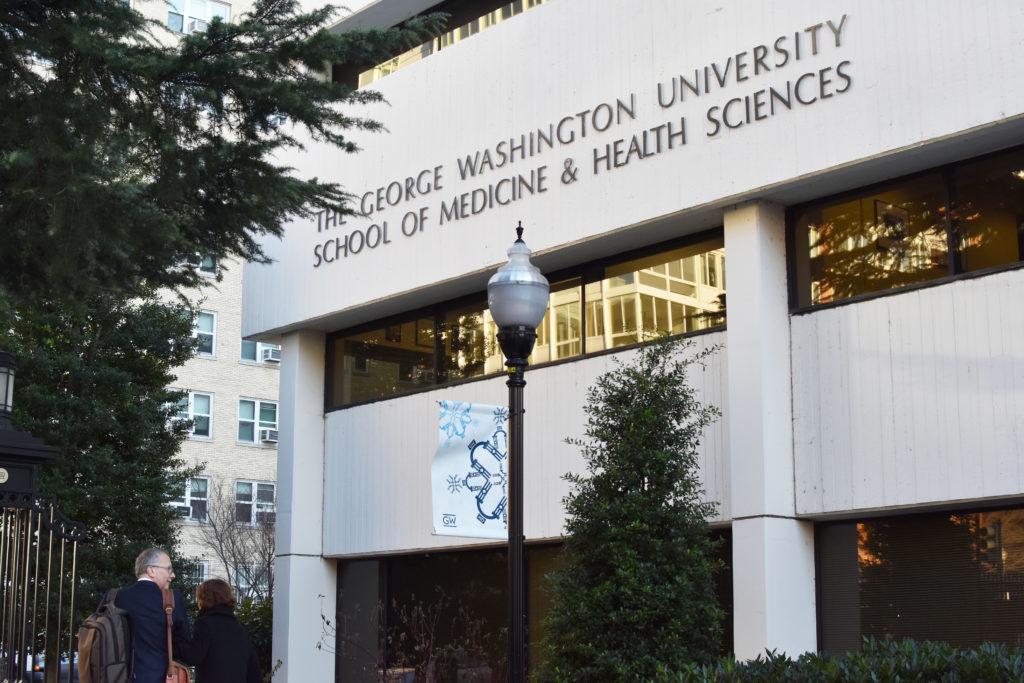A research team compiled a database of organisms that inhabit a healthy human gut, a move that experts say will help medical professionals understand how microbes facilitate bodily functions and cause disease.
The profile found that 157 microbial organisms live in the healthy human gut and compose part of the human gut’s microbiome – a community of bacteria, viruses and fungi that facilitate intestinal processes like digestion. Human microbiome experts said knowing which microbes reside in the healthy human gut helps researchers pinpoint abnormalities in the gut that could indicate gastrointestinal health issues.
Charles Hadley King, a senior research associate in the School of Medicine and Health Sciences and an author of the study, said he organized the project and developed the group’s data sequencing system. He said the database of healthy human gut bacteria will help researchers recognize disease-causing shifts in the types of organisms present in the microbiome.
“This knowledge base and reporting template aids in quantifying shifts in gut microbes and relating them to human health,” King said in an email. “We need to understand what is healthy to understand disease.”
The research team genetically sequenced 48 fecal samples from 16 healthy individuals in the D.C. area, according to a release on the medical school website. The researchers also examined 50 fecal samples taken from the Human Microbiome Project, a National Institutes of Health research initiative aimed at improving understanding of the microbiome, according to the release.
The team found that 84 organisms were present in all samples included in the study, indicating the number of microbes that comprise the “core” of bacterial species found in the human gut, the release states. King said the research team will continue to analyze fecal samples to further broaden the profile to include more of the microbes that inhabit the healthy human gut.
King added that several organizations, like the National Science Foundation and the McCormick Genomic and Proteomic Center, funded the team’s research.
Human microbiome experts said the profile will provide a “baseline” representation of what species and genera of microbes are present in the human gut, which may help researchers easily identify disease-causing deviations from the normal makeup of the microbiome.
Giovanni Widmer, a professor in the department of infectious disease and global health at Tufts University, said the organisms living in the gut facilitate processes that our bodies cannot perform themselves, like breaking down and digesting cellulose – a chemical substance found in vegetables like celery.
He said documenting the types of microbial life that are usually present in the healthy human gut allows researchers to more easily identify disease-causing abnormalities in what organisms are present in the microbiome, which can serve as the foundation for future research on treatment for gastrointestinal disease.
“If you want to study certain diseases that are related to the microbiome, you want to know, ‘What does that healthy microbiome look like?’ – so that you can compare it to a diseased one,” Widmer said.
Thomas Schmidt, a lab leader in the Michigan Microbiome Project at the University of Michigan, said the profile could help researchers artificially manipulate the composition of the microbiome to improve human health. He said researchers are investigating how to facilitate the growth of beneficial bacteria in the microbiome, which can potentially help people maintain a healthy weight and act as a treatment for Type 2 diabetes.
Schmidt added that eating fiber-rich foods, like potatoes and rice, may contribute to the growth of bacteria essential to the function of the healthy gut.
“The bigger effect is by eating certain foods, you’re favoring the growth of certain bacteria that are already there,” Schmidt said.
Joseph Petrosino, a professor in the Baylor College of Medicine, said clinicians can use the database to diagnose their patients, but the resource must be a “comprehensive” representation of the microbiome to be an effective tool. He said the types of bacteria present in a healthy microbiome differ across regions and demographics.
“Understanding what makes a healthy microbiome in one part of the world, or in a limited demographic, doesn’t necessarily mean that the same bacteria will be required for health in other parts of the world or for all demographics,” Petrosino said in an email. “But methods and standards to help serve as foundations for this type of profile development are great resources for the field.”
Ed Prestera contributed reporting.





